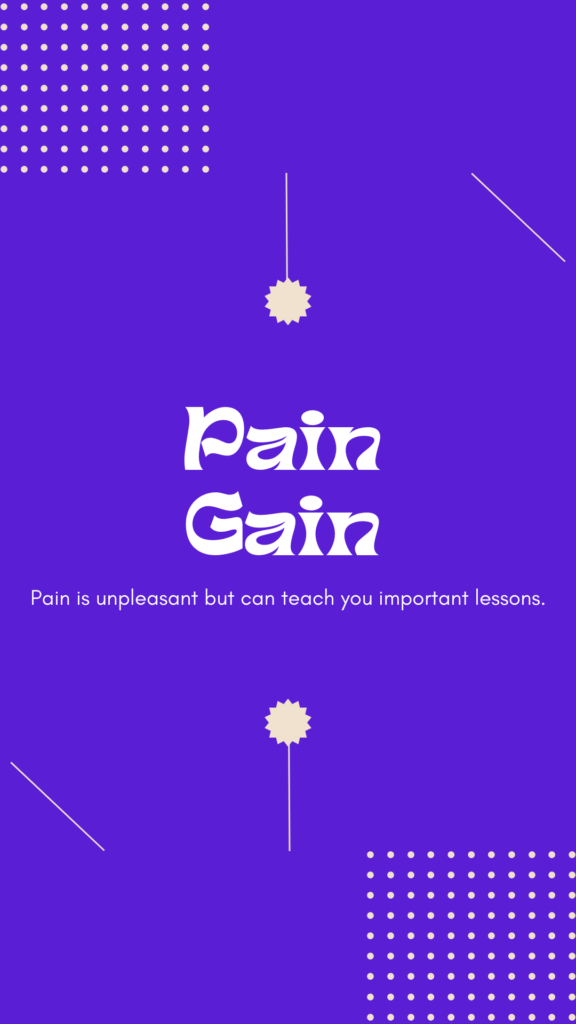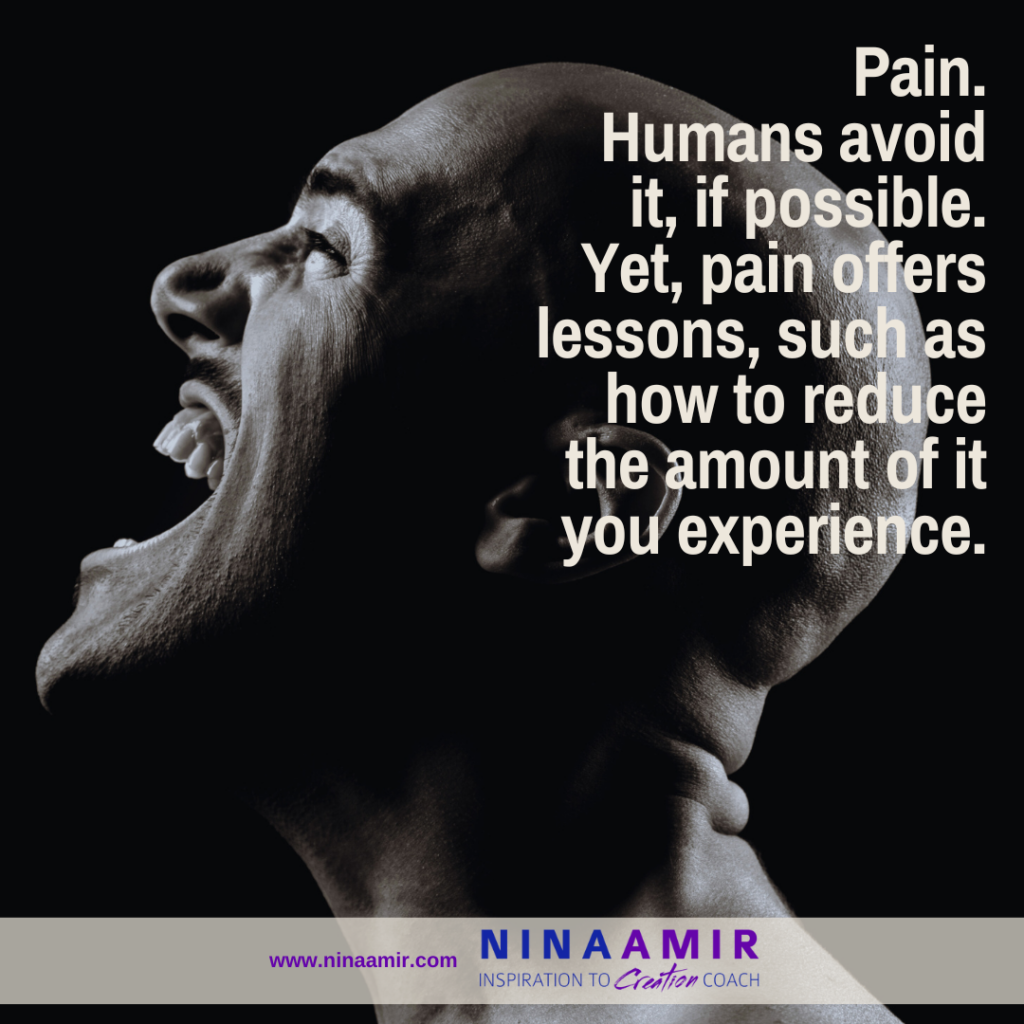Pain. It’s unpleasant and, more often than not, challenging to experience. Yet, pain often provides an opportunity to grow and learn. At least, that’s been my most recent painful experience.
On June 4, I did a faceplant while hiking. My toe hit a rock, and I fell straight forward, cutting my lip and nose and dislocating my shoulder. The shoulder dislocation was the most painful experience I may ever have had—even more painful than childbirth.
The following week, my back went out, making it difficult to walk, bend over, or even get out of a chair (especially since I only had one arm for assistance). My back strain remained painful for three weeks—the most prolonged bout of back pain I can recall.
Just as my back began feeling better, I came down with Shingles. We each have 30 dermatomes, an area of skin supplied by a single spinal nerve. The virus attacked the dermatome running across my right shoulder (the same shoulder I dislocated) and down that arm. I still have nerve pain five weeks later as I write this post.
On a spiritual level, when I dislocated my shoulder, I knew I had released a lot of energy from that joint. And between my knowing, a reading from a trusted intuitive, and comments from a shaman’s wife, I am sure all this pain—or the physical issues that caused it—provided an opportunity to release old emotional and belief-based baggage. This release—albeit painful—was necessary for me to grow and learn. And as I expand in this manner, I can step into the next phase of my life, playing bigger and devoting myself to my life’s work or purpose.
10 Pain-Induced Lessons
Being unable for more than two months to do much gave me lots of time to explore my mental and emotional state and why I needed this evolutionary experience, as the late Stuart Wilde used to say. I’ve learned 10 lessons at this point, and I want to share them with you. These lessons apply to anyone in a painful situation. Still, you do not need to be in pain to utilize them. If you are in pain, I believe you’ll find them helpful.
1. Surrender
When you can’t change something, surrender to the situation or experience. You may want to find a way to change the circumstance, which could be an appropriate and necessary action. But before you take that step, simply surrender, and you’ll find it easier to cope with the pain.
When I dislocated my shoulder, I recall being in the ER waiting room and struggling with the pain. I fought it… But when I moved out of my singular focus on the pain and took deep breaths, my body relaxed, and I surrendered…just a bit. Then the pain lessened just a bit.
Eventually, I had to totally surrender to the pain—like when the doc was halfway through putting my shoulder back in the socket. Fighting against the pain was a broken strategy, especially since it made the pain worse and caused me to tense up. I needed to relax so the bones could move into place quickly. The more I focused on the pain and wanted it gone, the more tense I became and aware of the pain. That made the process much harder and longer. When I surrendered, the bone slid into place quickly, meaning my pain dissipated quickly.
Even with the pain from my dislocated shoulder, back sprain, or Shingles at its worst, surrendering always helped more than wishing it would stop.
2. Accept
Surrendering requires acceptance. If you don’t accept your pain, you tolerate it. And tolerating creates negative emotions and thoughts, which won’t help you.
If you tolerate rather than accept, you feel angry, resentful, unhappy, stressed, and other negative emotions. And your focus will firmly be on the pain, which only increases it. ([What you focus on expands[(https://ninaamir.com/prove-what-focus-on-expands/).)
On the other hand, acceptance allows you to stop struggling with or pushing against your circumstance. Both approaches focus more on the situation and increase your pain.
3. Be Present
Being in pain provides an opportunity to become more present. It’s human nature to want to escape pain somehow, but if you can be with it in the moment, the pain decreases…or you can explore it.
So, if you feel pain, just sit with it—surrender, accept, and experience it. You don’t need to focus on it per se, thereby increasing it.
Presence requires that you not fall into the trap of wishing the pain would go away (future thinking) or that you never had whatever experience resulted in pain (past thinking). Instead, you are in the moment…you are being in pain.
Being present with pain is a higher level of acceptance and surrender. And it allows you to get still and discover your own knowing about why you are going through this experience.
4. Acknowledge
Pain is bound to bring up emotions. Obviously, your physical feelings are painful. However, you might also have emotions related to the pain, like frustration, anger, sadness, fear, or impatience.
Acknowledge both—the unpleasant physical sensations and the emotions that arise from them. For example, you can say, “I feel pain in my arm. That makes me scared and sad.”
Too often, we want to ignore pain or distract ourselves from it. Instead, acknowledge what you are going through on all levels—even a spiritual level.
5. Love Yourself
When you find yourself in pain, it’s easy to blame yourself. You might think, “If only I had paid more attention, maybe I wouldn’t have fallen.” Or “If I had been in better physical shape or taken better care of my health, I wouldn’t have this pain.”
 Stop blaming yourself! And stop criticizing, judging, and hating yourself. That won’t help. Such thoughts don’t change the situation or ease your pain; they add emotional pain to physical pain.
Stop blaming yourself! And stop criticizing, judging, and hating yourself. That won’t help. Such thoughts don’t change the situation or ease your pain; they add emotional pain to physical pain.
Instead, love yourself. And if you believe you already love yourself, love yourself more.
Love yourself enough to take care of your needs. For instance, I had to allow myself to sleep more…even to nap twice daily. And I had to love myself enough to not worry about work. I also had to love myself enough to be patient with my condition and put my needs first (even if they bothered others).
If you truly loved yourself, would you beat yourself up for being in pain…or for whatever circumstances led to that pain? No, you wouldn’t. You’d care for yourself unconditionally and in whatever way possible.
6. Appreciate
I realize it can feel difficult to appreciate pain. However, when you know that everything happens for you…not to you…you can get to a place of gratitude for whatever lessons you are learning or energy you are releasing.
I appreciated the break my three conditions required. I learned to slow down and be still. I stopped rushing and trying so hard to get things done.
I also felt grateful to release old emotional and energetic baggage, even if pain provided the means to that end.
If you focus on the lessons in your pain, you can move into appreciation. Explore the reasons why you might be going through this experience. And be excited about who you will be on the other side of the pain. Be grateful for that transformation.
7. Listen
My two months of pain allowed me to better listen to my body and its needs. I became present with how I felt each day and adjusted as needed.
For instance, when I felt tired, I napped. (I rarely nap typically.) When the pain was the worst, I took meds to make me more comfortable. I moved slowly and carefully when I finally started walking with my husband and puppy. And if I didn’t feel I had the energy to walk, I didn’t.
Your body will tell you what it needs—sleep, exercise, green veggies, a steak, or a funny movie. Listen carefully.
8. Transmute
Someone suggested I transmute the energy of pain into what I wanted to manifest. So, when the pain was the worst, I focused on my desires and channeled the pain into creation.
I can’t say if that worked; it’s too soon to tell. However, using the energy and emotion of pain toward something more positive surely can’t hurt! And the pain hurt less when I practiced this strategy.
9. Allow
Like surrendering, it’s helpful to allow your pain to exist. Allow the circumstance to be…without trying to change it.
When you focus on wanting the circumstance or experience gone or to end, you fight against what is—the pain. And that makes it worse.
Allow the pain to exist, but shift your energy to something more pleasant—like what you want to create. Imagine having what you desire, even if that is a pain-free life. Program yourself for that while allowing the current pain to run its course.
10. Be still
The best part of being in pain—if there is such a thing—was the stillness I experienced. When I got out of my head and thoughts about the pain, I found myself in a quiet space. With little mental or physical movement, I found myself simply being.
You hear about this state from meditation experts or spiritual gurus. They always teach, “Be still!” For me, pain helped me get to that point of stillness.
And from that place, I could better learn the lessons offered by my pain and experiences. And I sometimes found myself in a place of no thought…albeit briefly. At those times, I understood how meditation can bring you into alignment with your soul and the Creator or Collective Consciousness.
Do What You Need to Do
These 10 lessons may seem like passive ways to approach pain. Yet, you can (and should) do what is necessary to reduce your pain. You can take appropriate actions to feel better.
For instance, I took pain meds for my back (meant for my shoulder, which didn’t hurt much after the ER trip), which allowed me to sleep. I took different pain meds for the Shingles and used topical meds as well.
Seek out the help you need, but also put these 10 lessons into play. This two-fold strategy will help you feel better faster than you thought possible.
Have you found ways to ease your pain? Tell me in a comment below. And please share this post with a friend or on social media.
And f you want to increase your ability to create inspired results, let’s chat. Get on my calendar here. Or join the Inspired Creator Community for group personal and spiritual growth coaching every month. It’s in this community that real transformation happens…and you learn to live a life that feeds your soul.
 It’s time to transform, is it not? Join the Inspired Creator Community. As a member, you will discover how to change from the inside out. Finally, be the person who does the things that allow you to create what you desire. Gain access to intuitive transformational coaching, world-class Certified High Performance Coaching, and strategies for living a life that feeds your soul. As you will discover, you are a powerful creator. It’s time to create what you want. Join now!
It’s time to transform, is it not? Join the Inspired Creator Community. As a member, you will discover how to change from the inside out. Finally, be the person who does the things that allow you to create what you desire. Gain access to intuitive transformational coaching, world-class Certified High Performance Coaching, and strategies for living a life that feeds your soul. As you will discover, you are a powerful creator. It’s time to create what you want. Join now!Photo courtesy of Zelma Brezinska .


